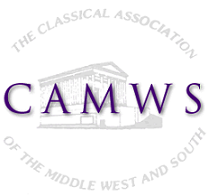CPL Award For Outstanding Promotional Activity in Schools 2017
Submitted by Ian Hochberg
St. Stephen's and St. Agnes School
Alexandria, Virginia
100-word summary:
When high school students promote Classics and Latin in an elementary school they are really serving two audiences: the young children being taught and the high school students themselves who in an essence are re-kindling their love of Latin in the process of promoting it. St. Stephen's & St. Agnes School Latin 2 students discovered this when they designed lessons to teach 3rd grade science students about constellations and mythology. They truly designed the curriculum start to finish. They knew the wanted to teach science students about constellations and mythology, and so I paired them with 3rd grade science classes.
500-word project description:
My students started with a tabula rasa, in the form of a blank Google Doc, from which to design their curriculum. Students elected to teach the myth of Perseus and the corresponding constellations (Cepheus, Andromeda, Cassiopeia, Cetus, and Pegasus). They reread the myth in D’Aulaires’ Book of Greek Myths, researched further, and collaboratively wrote a short play of the myth using the Google Doc. Students creatively selected and gathered all the props and memorized their parts for the play. They even decided to each contribute money to buy the famous “left shark” costume from Katy Perry’s Superbowl halftime performance to serve as the sea monster.
I should point out that this was not an assignment with a grade attached. The students just wanted to share their love of Classics with elementary school students. I allowed them time during class to brainstorm ideas but they ended up enlisting the efforts of classmates from other Latin classes. Close to 20 students visited these 3rd graders on numerous occasions.
Their lesson ended up with many components: a video introduction about the constellation Orion; a brief introduction to the myth of Perseus; a short play that they wrote, directed, and produced; a review of the myth using a National Geographic poster of constellations; apairing of high school students with 3rd graders using Latin names of and images of constellations; small group work on individual myths and constellations; and finally the opportunity to hit King Acrisius with a discus. This last activity was perhaps the most enjoyable for the 3rd graders, who hurled discuses with reckless abandon at the play’s Acrisius. Those who successfully fulfilled the prophecy were given “official”, lamented “Grandfather slayer” badges.
Students wanted to make the learning of mythology and Latin words fun and lasting for 3rd graders. Therefore, to divide into partners, each high school student had a picture of a constellation, which they had selected, with its Latin name on card stock. 3rd graders selected cards with animals or objects written on them in English and had find the high school student with the matching constellation. The high school student then briefly explained the myth behind the constellation, which they had researched on their own. Once 3rd graders saw the connection, they designed their own constellation and story behind it with chalk on black construction paper. As 3rd graders narrated their stories high schoolers them down and taped them to the back. Stories ranged from descriptions of lacrosse sticks to imaginary pig-dragons. The goal was to link a narrative to a constellation of their own design. Students loved the activity! It had personal meaning for each student as they drew and wrote about something important to them.
I feared that the excitement of these events would easily wear off; however, both 3rd grade students and my high school students still talk about these classes months later. Many said it was the most fun they have ever had in science and that they definitely plan to take Latin someday. Mirabile auditu!
Pictures and Videos from the Lessons:
https://drive.google.com/drive/folders/0BzY7C1kGfoxiM2IyTGhWZ0tQQkU?usp=sharing
Perseus Script:
https://docs.google.com/document/d/1apqnHAhNbM-n52s2trsLf8p9pvcINqdTxkpMGduV8hA/edit?usp=sharing
Constellations and Latin names:
https://docs.google.com/document/d/1VyoUAgKr5tP7Y2kxb6T3ngk-v_Qes7XcFrGoazou1-8/edit?usp=sharing
Perseus lesson notes and brainstorming ideas:
https://docs.google.com/document/d/1Gg6yIeheploiEd4hQtnnjV-PGxtSZiowgVXDpBNz8Ro/edit?usp=sharing
Two letters from the elementary school science teacher:
https://drive.google.com/a/sssas.org/file/d/0BzY7C1kGfoxiczc3aXNWaDdEVmM/view?usp=sharing
